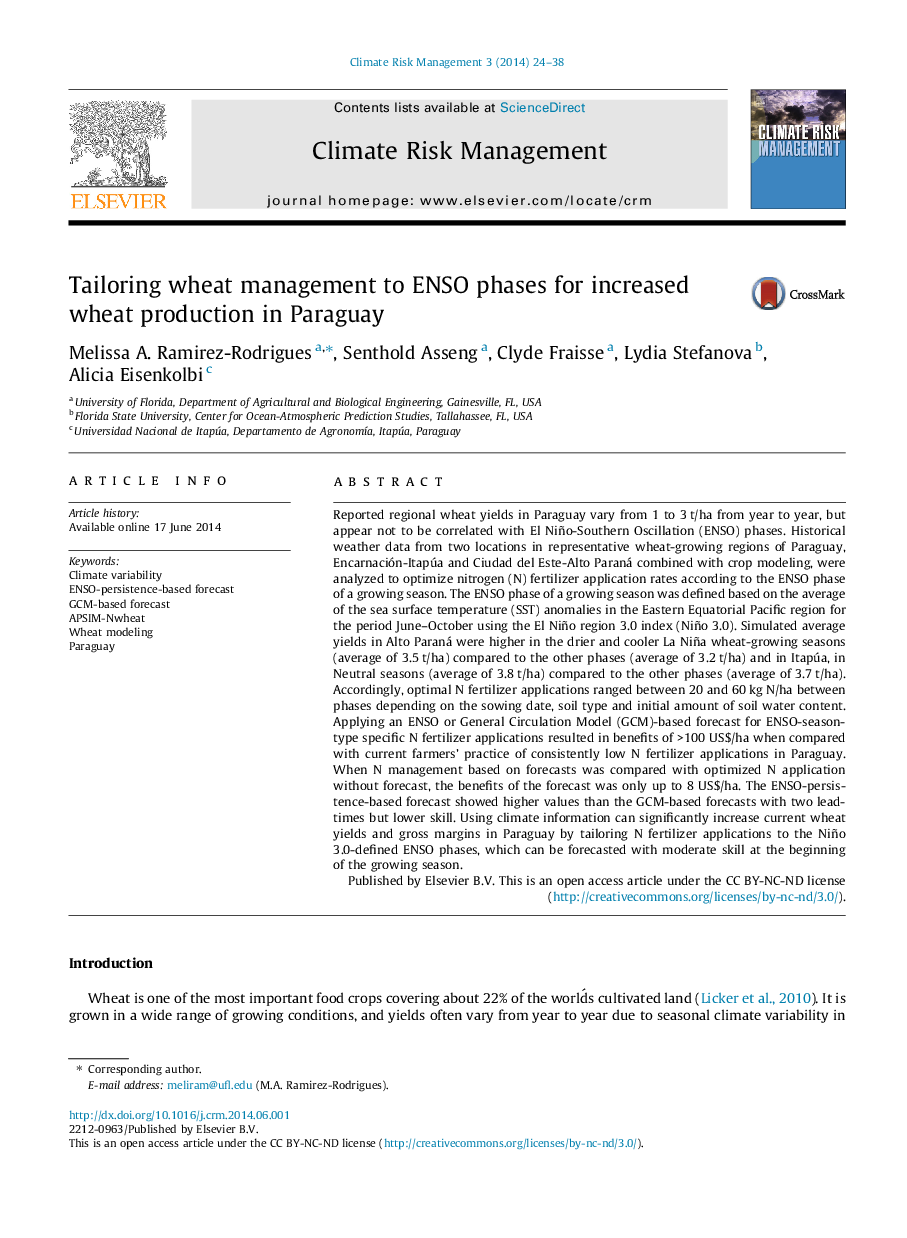| کد مقاله | کد نشریه | سال انتشار | مقاله انگلیسی | نسخه تمام متن |
|---|---|---|---|---|
| 1051280 | 1484888 | 2014 | 15 صفحه PDF | دانلود رایگان |

• Temperature and rainfall vary with Niño 3.0 seasonal ENSO phases in Paraguay.
• ENSO phases enable farmers to tailor wheat nitrogen management to season types.
• An ENSO-based forecast had higher skill than GCM-based forecasts.
Reported regional wheat yields in Paraguay vary from 1 to 3 t/ha from year to year, but appear not to be correlated with El Niño-Southern Oscillation (ENSO) phases. Historical weather data from two locations in representative wheat-growing regions of Paraguay, Encarnación-Itapúa and Ciudad del Este-Alto Paraná combined with crop modeling, were analyzed to optimize nitrogen (N) fertilizer application rates according to the ENSO phase of a growing season. The ENSO phase of a growing season was defined based on the average of the sea surface temperature (SST) anomalies in the Eastern Equatorial Pacific region for the period June–October using the El Niño region 3.0 index (Niño 3.0). Simulated average yields in Alto Paraná were higher in the drier and cooler La Niña wheat-growing seasons (average of 3.5 t/ha) compared to the other phases (average of 3.2 t/ha) and in Itapúa, in Neutral seasons (average of 3.8 t/ha) compared to the other phases (average of 3.7 t/ha). Accordingly, optimal N fertilizer applications ranged between 20 and 60 kg N/ha between phases depending on the sowing date, soil type and initial amount of soil water content. Applying an ENSO or General Circulation Model (GCM)-based forecast for ENSO-season-type specific N fertilizer applications resulted in benefits of >100 US$/ha when compared with current farmers’ practice of consistently low N fertilizer applications in Paraguay. When N management based on forecasts was compared with optimized N application without forecast, the benefits of the forecast was only up to 8 US$/ha. The ENSO-persistence-based forecast showed higher values than the GCM-based forecasts with two lead-times but lower skill. Using climate information can significantly increase current wheat yields and gross margins in Paraguay by tailoring N fertilizer applications to the Niño 3.0-defined ENSO phases, which can be forecasted with moderate skill at the beginning of the growing season.
Journal: Climate Risk Management - Volume 3, 2014, Pages 24–38